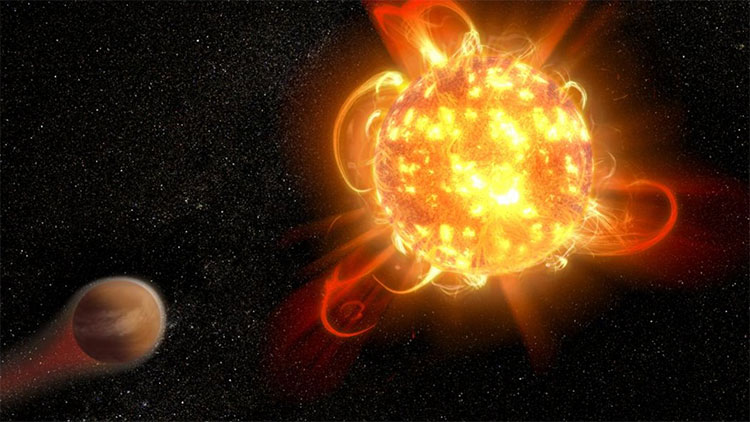Energy explosions are horrifying from the stars
The sun and stars like it can cause energy explosions to break down electrical networks, telecommunications systems and related devices and satellites.
A strange phenomenon from 43 why our sun is similar is determined by American scientists. These are energy explosions that look like super flares, thousands of times stronger than the solar flames. It can be said that it is a form of "supernatural powers of stars" that most stars possess, including the sun.

Dubbed the "super flares", horrifying energy explosions from the stars could threaten planets around it - (graphic images from NASA / ESA).
Often, this "esper power" is hidden by the stars, helping the orbiting planets have a long, peaceful period with sufficient energy. However, at some point, the star will rise and let the world know its power.
The new study, led by astronomer Yuta Notsu from the University of Colorado Boulder (USA), calculates that our sun is an old star, showing little like the younger stars but will also rise. follow a cycle of several thousand years.
A small energy explosion from the sun occurred in 775 AD and it is estimated that in the next 100 years or a little longer, the sun will have a superhuman performance.
Nicknamed "superflares" - super-flares, energy explosions that the sun and stars like it produce are so powerful that they can disrupt electrical networks and telecommunications systems and devices. affected, satellites involved, causing heavy global incidents to planets with civilizations like the earth.
According to the authors, the sun once hit its planets with stronger and more frequent energy punches. Thankfully, the last time it showed "the superpower of the stars" , the Earth did not have the modern electricity and telecommunications system today.
The above finding shows that in the future, we need to come up with many options to protect the electricity - telecommunications system, because today people are too dependent on them. The disruption of these two systems may cause a global disaster.
The study used data from NASA's Kepler Space Telescope, Gaia spacecraft of ESA (European Space Agency) and Apache Point Observatory in New Mexico. The work has just been presented at the 234th meeting of the American Astronomical Society held in St. Petersburg. Louis.
- Why the dead body
- 10 most horrifying explosions in human history
- Supernova explosions shoot super-fast stars across the galaxy
- The supernova explosion can destroy Earth from 50 light years
- Dark Star - Gift from the Universe
- The explosion of cosmic light was struck by two young stars
- Ancient stars reveal the time when gravitational waves land on Earth
- Actual photos of two stars are eating each other
- Constellations 13 billion years old
- Stars explode affecting the weather on Earth
- The mysterious death of some stars
- Discovered that twin stars are being incubated in a physical disk
 Van Allen's belt and evidence that the Apollo 11 mission to the Moon was myth
Van Allen's belt and evidence that the Apollo 11 mission to the Moon was myth The levels of civilization in the universe (Kardashev scale)
The levels of civilization in the universe (Kardashev scale) Today Mars, the sun and the Earth are aligned
Today Mars, the sun and the Earth are aligned The Amazon owner announced a secret plan to build a space base for thousands of people
The Amazon owner announced a secret plan to build a space base for thousands of people